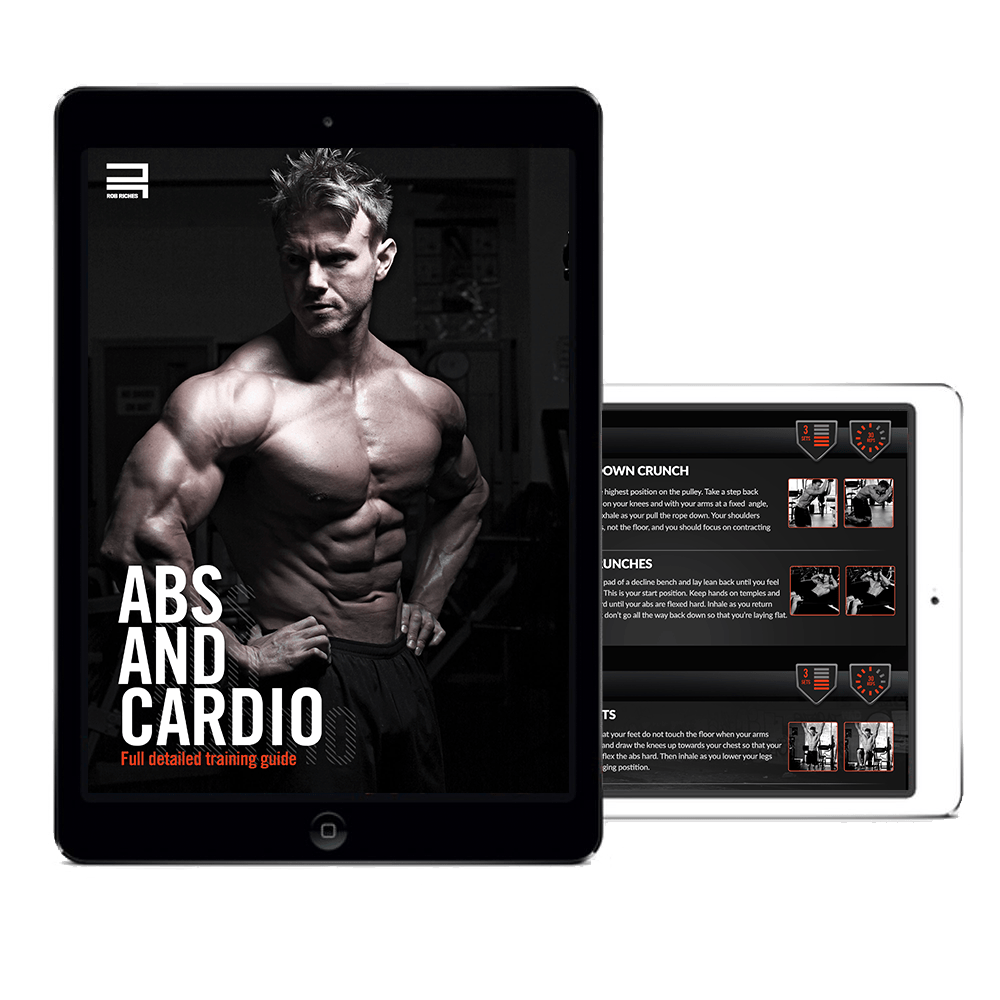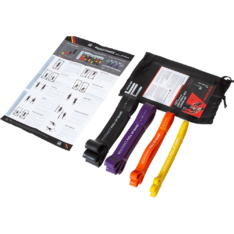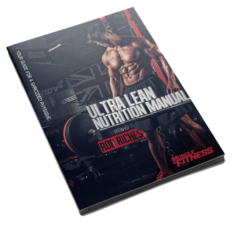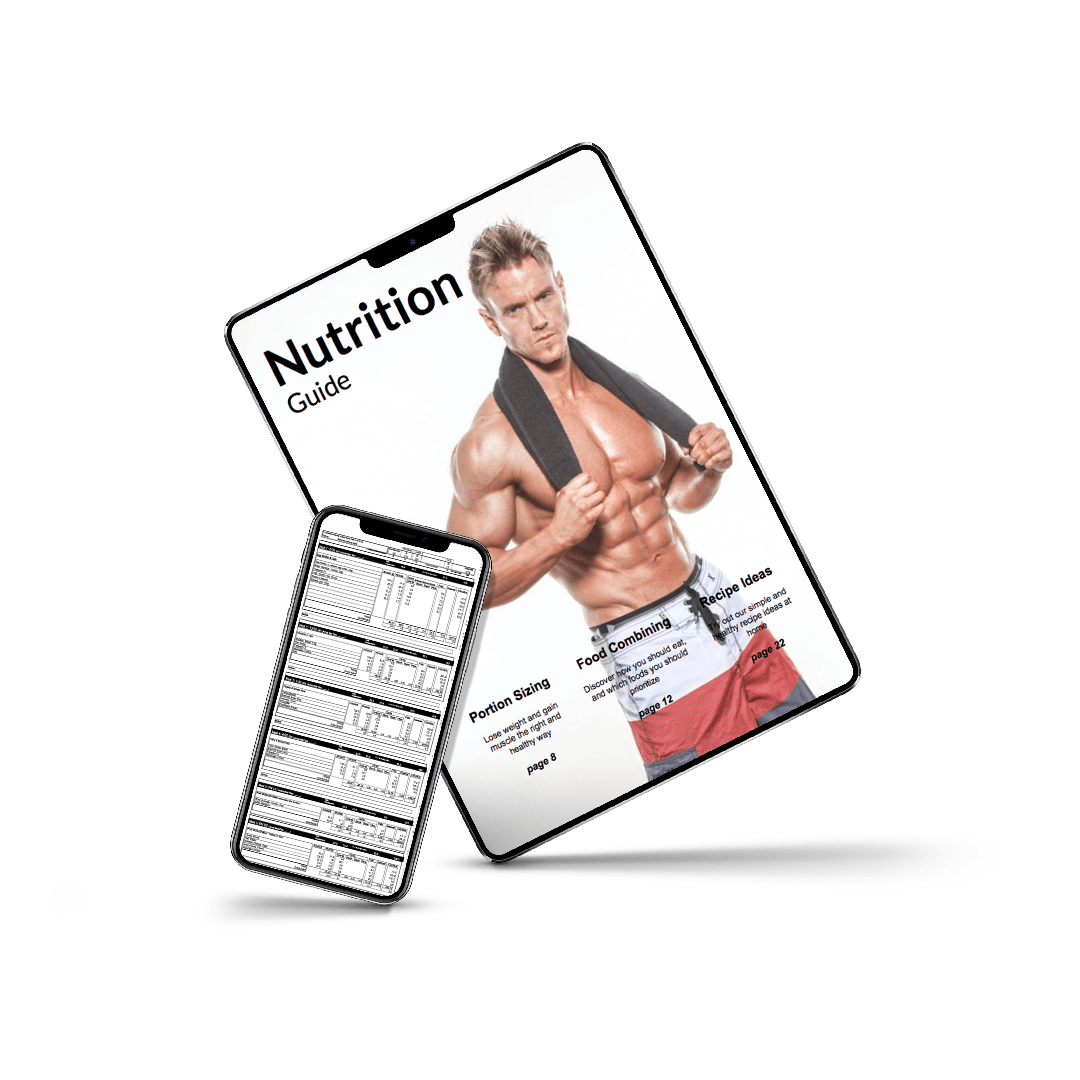Modified Upper Chest Workout
The chest has always been a strong focus point for those seeking physical perfection. It has always been depicted from Greek Mythology to a DC comic book hero as being a sign of strength, power, and often authority. This article and accompanying video takes a look at a number of effective exercises and variations that I’ve personally fond to be beneficial in truly shaping the chest, and makes a great addition to the standard movements performed within a typical chest routine.
Before even starting my warm up routine with weights, I make time to focus on not just warming up the pectorals, but also the connective tissues and fibers involved within practically every chest movement. I’m talking about joint mobility and muscle fiber elasticity, both of which are vital to ensuring a safe and productive workout whereby you can work within the full range of motion and flexibility, which also allows for optimal recovery, growth, and future progress.
As seen within the video above (0:35 seconds in), I perform 4 movements, consisting of a banded isometric chest push, banded shoulder hang, barbell chest stretch, and kettlebell pec smash (the name sounds much harsher than what’s actually involved). This is then followed by several sets of light incline dumbbell presses and flat bench dumbbell flys. 10 minutes later I find myself feeling warmed up and prepped for the workout ahead, which as you’ll soon find out, does not revolve around using much weight. I’ll therefore use this routine perhaps once a month, with the three other weeks focusing on much more of the typical chest-type movements where I’m pushing greater weight with progressive overload.
All of the exercises shown below are performed in a superset fashion, meaning that after the first exercise is completed, the second movement is immediately performed without rest. Then, allowing no more than 45-60 seconds, repeat the same superset again twice more.
Superset #1: High Incline Shoulder-Width Presses, & Kneeling Barbell Landmine Presses.
3 sets of 12 & 12 reps each.
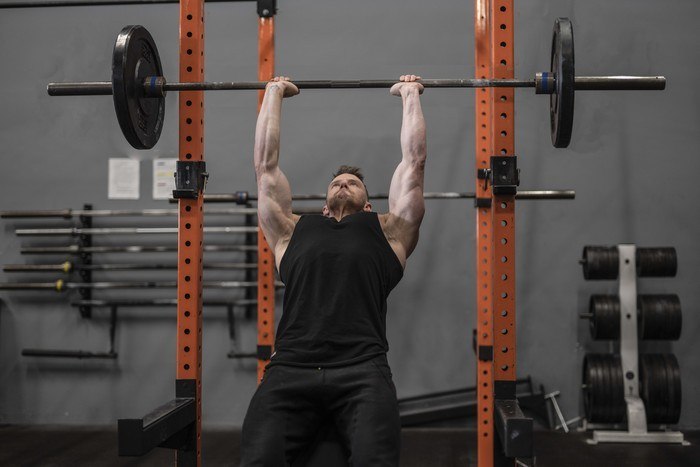
Barbell incline presses have been a long-time favorite of mine during chest days. They were one of the first exercises I was shown when I remember being introduced to the gym in my early teens. The involvement and stress on the upper pectorals within an incline press can really make a different to the shape of your chest, but it’s with these – even steeper incline presses, using a grip no wider than your shoulder-width, and elbows kept angled forwards, that I feel the upper region of my chest pump up like never before.
Using an incline bench that’s only 1-2 clicks down from being vertical, and resting my lower back and shoulder blades against it, I keep my chest lifted high and shoulders pulled far back, holding the bar with an open grip and keeping my elbows from flaring too far outwards whilst pressing the barbell upwards, ensuring my chest is contracted as I push.
I’ve found it not necessary to lower the bar all the way to my chest, but rather only to chin height (keeping the head at least in a neutral alignment with the spine), which helps keep the pectorals somewhat contracted, and requires a lot less stress going through the elbows and shoulder joints.
Your focus should be on controlling the barbell in a smooth and controlled manner, exhaling as you press upwards, and inhaling through the nose as you lower the bar back down at a slightly slower tempo. At all times throughout each set you should be consciously and actively contracting the pectorals as you press and lower the weight.
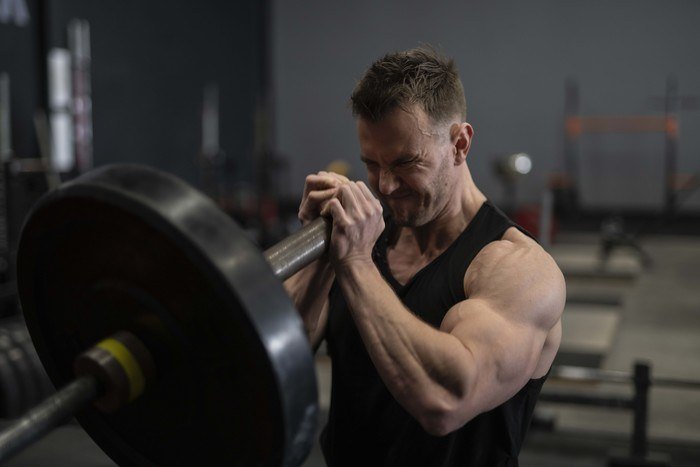
This next movement may appear at first to be more shoulder focused, although it’s the positioning of the elbows that once again places the focus upon the upper region of the chest.
Whether you opt for the landmine barbell press (as demonstrated within the video), or want to set up your own version by angling the barbell into a corner with a heavy dumbbell placed over it, the principle remains the same: cupping the end of the barbell with a plate added, lift it up to chest height while being supported on your knees directly below the bottom of the end of the barbell you are holding (this is important as it sets the curvature of the angle at which your pressing upwards).
Keeping your elbows pulled inwards, push the barbell upward (it will follow a curvature away from you the higher that it goes. Try not to lean in towards it but remain fixed in the same position from which you start in). As you do, consciously engage the pecs, increasing the contraction the higher your push. Once at the top, pause for a split second while still squeezing the chest hard, and then lower back down at a slower tempo. The key to really feeling it within the chest and not the elbows is to remain kneeling, sat back on your heels, and push the bar upwards by driving through your arms whilst keeping the elbows relatively tucked in.
Superset #2: Alternative Single-Arm Low Cable Fly, & Incline Bench Resistance Band Flys.
3 sets of 15 & 15 reps each.
Skull Crushers
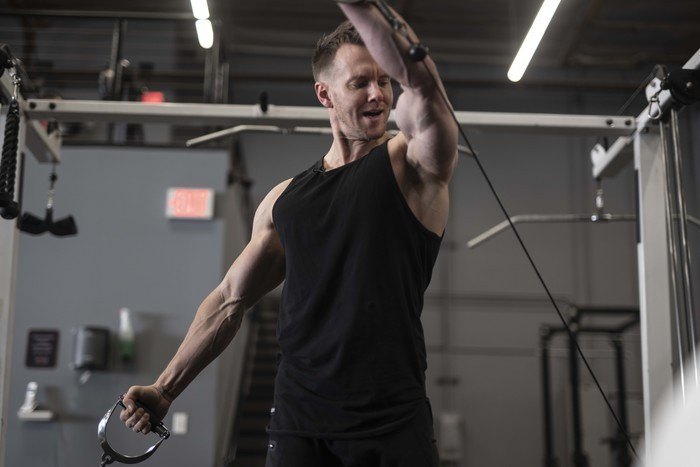
With the first two exercises focused on pressing movements, we now shift our attention to a fly movement, starting with alternative single arm low cable flys.
The reason why I’ve opted for this low position is quite simply because the majority of ‘fly’ work performed in the gym is typically from a high-to-mid point, and as this routine is focusing on detail, I wanted to highlight the benefit of performing such a movement.
One of the main benefits of performing this one arm at a time is that you allow for a further range of motion. When both arms are used simultaneously, you will usually find they meet at the center point (unless a cross-hand fly is being performed), so with only focusing on one arm per rep, you can raise the handle as far across you, brining your elbow almost in front of your face.
The change of angle (from high to now a low position), will also mean you’ll be working your chest through an entirely different angle, stressing the fan-shaped pectoral muscles in a different manner than when performed with a higher pulley setting. I’ve found that by keeping a lighter weight and concentrating more on getting a great contraction during each rep will allow you to “feel” the muscle work and continue to get a pump.
This exercise can also be performed against an incline bench (positioned center, and forwards of both the cable pulleys), which may help you feel more stable, as well as eliminating any swinging or momentum that may be present during the standing version.
Incline Bench Rope Pull-downs
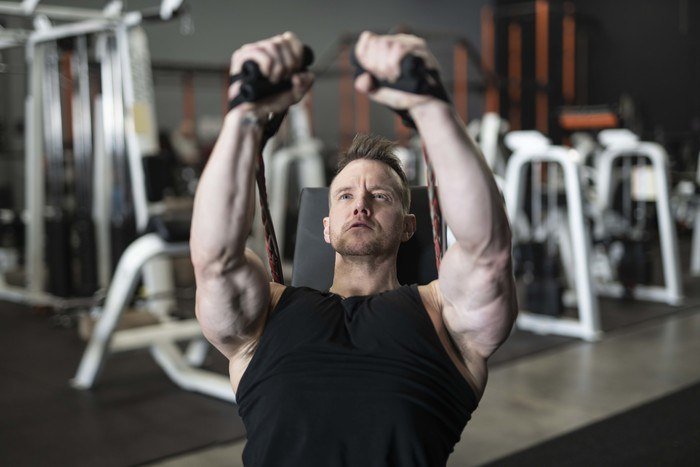
Having just performed cable flys, you may be wondering why it’s necessary to perform the same type of movement again? Given that these exercises are performed as supersets, you can think of this variation as more of a drop set, whereby the weight being lifted is lighter (depending on the strength of the resistance bands used), yet the muscular contraction at the end of the repetition is a very different one than that experienced with cable flys (and even dumbbell flys).
This is because most fly movements consist of a fixed resistance being moved through a range of motion (even with cables, you’ll lifting a weight stack up and down upon a fixed axis). By using resistance bands secured behind the incline bench (they can be doubled up, with more added to increase resistance further, although I find two at most will usually suffice), through a kettlebell handle or under a heavy dumbbell, you can perform the same fly movement but will feel an increasing amount of resistant the closer you get your hands together at the top.
This particular movement isn’t about how much weight or resistance you can move. It’s about how much tension you can create and hold momentarily within your pectorals when at the top of each rep. This is an exercise that needs to be performed with full commitment to consciously engaging and contracting the muscle during every repetition. You may also find that you can position the center of the bands (whether by kettlebell or dumbbell behind you), as different lengths behind you, which then may not allow you to complete a full rep, but rather feel that maximum tension within the chest at different ranges. During each of the 3 sets being performed, try positioning the band further and further back behind you, forcing you to work the chest through different ranges of maximal contraction and different positions within the rep.
Superset #3: Wide-grip pull Ups, & Side-to-side Medicine Ball Push Ups
3 sets of 12-15 (and to failure on final sets).
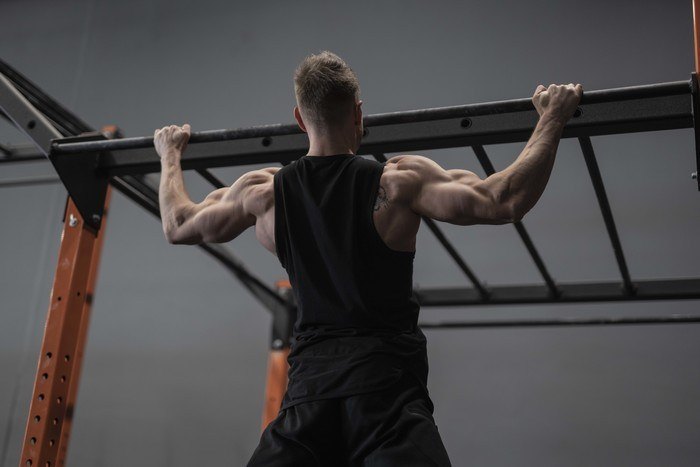
Almost as soon as I began lifting weights, I had included wide-grip pull-ups within my chest routine. I welcome the stretch across the pectorals as I pull myself upwards, especially after having subjected the pecs to numerous sets against resistance, although it’s not quite the same as a standard pull-up.
For starters, my grip is wider apart, meaning my elbows aren’t kept at a right-angle, and my forearms are not perpendicular to the floor (as is the case when focusing primarily on the muscles in the back as being the focus), and I’m titling my chest upwards as if trying to make a connection between my chest and the bar.
This subtle change allows you to really open up the chest and stretch out all of the fibers and connective tissues (something else we typically do not focus on during usual chest workouts).
If you’re unable to lift your bodyweight for the desired amount of reps, commit to doing as many as you can. Alternatively, you can use a resistance band looped around the bar directly above you and perform the movement with either the open end of the band looped around your foot or bent knee, depending on the level of assistance required.
Keep the movement as fluid and smooth as possible, focusing on your breathing by exhaling as you lift up, and inhaling as you lower back down.
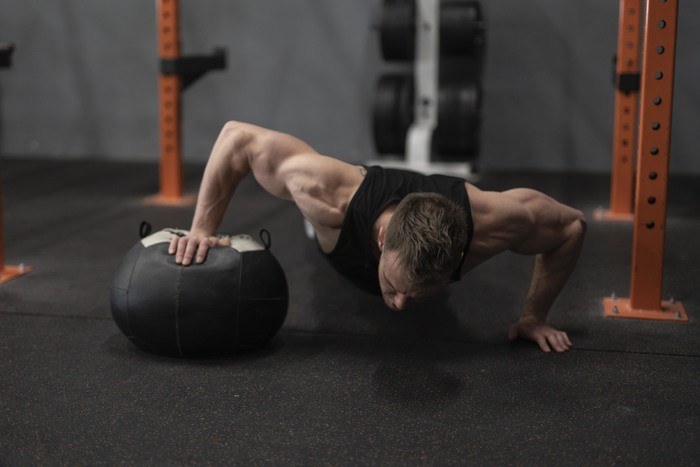
I remember one of the first times that I really felt my chest pumped –before picking up my first weight, was during a science class at school and was based around performing a number of different exercises for 60 seconds. For some reason, I believed I could push my body weight up and down for a full minute rather than jump rope for the same amount of time. I may have missed the point of the teacher about energy expenditure, but I had experienced my chest pump up in a way like never before.
This variation of a push up, whereby you maneuver left and right over a medicine or smash ball, lowering yourself down on one side of the ball with one hand positioned upon the ball and the other on the floor, followed by the a reversal as you pass over to the other side.
Unlike the majority of most chest exercises, this movement forces each side of the chest to work at different range of motions. With the right hand on top of the medicine ball, your left hand is on the floor and lower than the right by at least 6-8 inches. This translates that you left pectoral will get a much deeper stretch than the right one, and vice versa when you change sides.
Just like with all the exercises and movements within this workout; the focus is on detail within the chest and not simply size or strength. Think of it as filling in the cracks within your typical training routine, allowing you to enhance not just the aesthetic qualities of your physique, but also the flexibility & health of your joints as well as greater mobility. After all, you owe it to your body to look after it and have it perform at its best.
